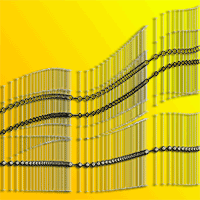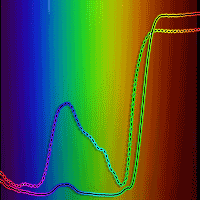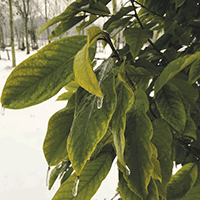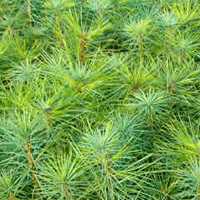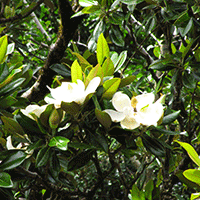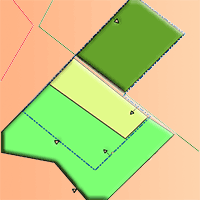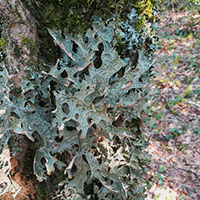
Impact of forest management on threatened epiphytic macrolichens: evidence from a Mediterranean mixed oak forest (Italy)
Luca Paoli (1) , Renato Benesperi (2), Zuzana Fačkovcová (3), Juri Nascimbene (4), Sonia Ravera (5), Marco Marchetti (5), Barbara Anselmi (6), Marco Landi (7), Sara Landi (8), Elisabetta Bianchi (2), Luca Di Nuzzo (2), Anna Lackovičová (3), Andrea Vannini (9), Stefano Loppi (9), Anna Guttová (3)
iForest - Biogeosciences and Forestry, Volume 12, Issue 4, Pages 383-388 (2019)
doi: https://doi.org/10.3832/ifor2951-012
Published: Jul 12, 2019 - Copyright © 2019 SISEF
Research Articles
Abstract
Forest management practices may heavily affect epiphytic cryptogams. This study was conceived in March 2016, as soon as we were informed about an authorized logging for timber within a Mediterranean mixed oak forest in Tuscany (central Italy), which threatened a large population of the forest macrolichen Lobaria pulmonaria (L.) Hoffm., composed of hundreds of fertile thalli. Lobaria pulmonaria is often used as an ecological indicator of high quality habitats hosting rare lichens, and in general, cryptogams worthy of conservation. The species has suffered a general decline throughout Europe as a consequence of air pollution and intensive forest management, and currently it is red-listed in several countries, where it is considered also as a “flag species”. We estimated that 40% of the lichen biomass (8.5-12.3 kg ha-1) has been lost due to logging operations (in the core area, up to 1.8 kg every 100 m2), in particular large and fertile thalli. One year after the conclusion of logging operations, the analysis of chlorophyll fluorescence emission (indicator of the photosynthetic performance of the lichen photobionts), revealed a significant reduction of the vitality of the thalli on retained-isolated trees. The article provides issues for conservation in Mediterranean oak forests and outlines the outmost importance of ensuring the safeguard of forest ecosystems hosting fertile populations of this model species, especially in the case of unprotected forests.
Keywords
Biomass Loss, Chlorophyll Fluorescence, Flag Species, Legal Protection, Lobaria pulmonaria, Red Lists
Authors’ Info
Authors’ address
Department of Biology, University of Pisa, v. Ghini 13, 56126, Pisa (Italy)
Elisabetta Bianchi
Luca Di Nuzzo
Department of Biology, University of Florence, v. La Pira 4, I-50121, Florence (Italy)
Anna Lackovičová
Anna Guttová
Plant Science and Biodiversity Centre, Slovak Academy of Sciences, Dúbravská cesta 9, SK-84523 Bratislava (Slovakia)
Department of Biological, Geological and Environmental Sciences, University of Bologna, v. Irnerio 42, I-40126 Bologna (Italy)
Marco Marchetti 0000-0002-5275-5769
University of Molise, Campobasso (Italy)
Associazione Culturale di Murlo, p.zza Cattedrale, I-53016 Murlo, Siena (Italy)
Reparto Carabinieri per la Biodiversità di Siena, Loc. Il Braccio 4, I-53100 (Italy)
Department of Natural and Land Sciences, University of Sassari, Loc. Piandanna, I-07100 Sassari (Italy)
Stefano Loppi 0000-0002-3404-1017
Department of Life Science, University of Siena, v. Mattioli 4, I-53100 Siena (Italy)
Corresponding author
Paper Info
Citation
Paoli L, Benesperi R, Fačkovcová Z, Nascimbene J, Ravera S, Marchetti M, Anselmi B, Landi M, Landi S, Bianchi E, Di Nuzzo L, Lackovičová A, Vannini A, Loppi S, Guttová A (2019). Impact of forest management on threatened epiphytic macrolichens: evidence from a Mediterranean mixed oak forest (Italy). iForest 12: 383-388. - doi: 10.3832/ifor2951-012
Academic Editor
Rodolfo Picchio
Paper history
Received: Aug 20, 2018
Accepted: Apr 28, 2019
First online: Jul 12, 2019
Publication Date: Aug 31, 2019
Publication Time: 2.50 months
Copyright Information
© SISEF - The Italian Society of Silviculture and Forest Ecology 2019
Open Access
This article is distributed under the terms of the Creative Commons Attribution-Non Commercial 4.0 International (https://creativecommons.org/licenses/by-nc/4.0/), which permits unrestricted use, distribution, and reproduction in any medium, provided you give appropriate credit to the original author(s) and the source, provide a link to the Creative Commons license, and indicate if changes were made.
Web Metrics
Breakdown by View Type
Article Usage
Total Article Views: 43641
(from publication date up to now)
Breakdown by View Type
HTML Page Views: 36732
Abstract Page Views: 3446
PDF Downloads: 2642
Citation/Reference Downloads: 6
XML Downloads: 815
Web Metrics
Days since publication: 2347
Overall contacts: 43641
Avg. contacts per week: 130.16
Citation Metrics
Article Citations
Article citations are based on data periodically collected from the Clarivate Web of Science web site
(last update: Mar 2025)
Total number of cites (since 2019): 12
Average cites per year: 1.71
Publication Metrics
by Dimensions ©
Articles citing this article
List of the papers citing this article based on CrossRef Cited-by.
References
Performance of macrolichens and lichen genera as indicators of lichen species richness and composition. Conservation Biology 19: 1051-1062.
CrossRef | Gscholar
Integrative approaches as an opportunity for the conservation of forest biodiversity. European Forest Institute, Germany, pp. 284.
Gscholar
Rote Liste und Gesamtartenliste der Flechten (Lichenes) von Berlin [Red list and species list of lichens of Berlin]. In: “Derlandesbeauftragte Für Naturschutz und Landschaftspflege / Senatsverwaltung für Umwelt, Verkehr und Klimaschutz (Hrsg.)” [Regional supervisor for nature and landscape / Senate management for environment, transport and climate protection]. Rote Listen der gefährdeten Pflanzen, Pilze und Tiere von Berlin [Red Lists of Endangered Plants, Fungi and Animals of Berlin], 28 S. DepositOnce, Web site. [in German]
CrossRef | Gscholar
Beiträge zur Lichenographie von Thüringen [Contributions to the Lichenography of Thuringia]. Hedwigia 51: 176-220. [in German]
Gscholar
Lichens: sensitive indicators of changes in forest environment. In: “Integrative Approaches as an Opportunity for the Conservation of Forest Biodiversity” (Kraus D, Krumm F eds). European Forest Institute, Freiburg, Germany, pp. 180-185.
Online | Gscholar
Osservazioni sui licheni di Crevole [Observations on the lichens of Crevole]. MurloCultura 16 (1): 8-10. [in Italian]
Gscholar
Lichenological indicators of age and environmental continuity in woodlands. In: “Lichenology: Progress and Problems” (Brown DH, Hawksworth DL, Bailey RH eds). Academic Press, London, UK, pp. 279-307.
Gscholar
Naturschutzbiologie bei Flechten: Konzepte und Projekte [Conservation biology in lichens: concepts and projects]. Kleine Senckenbergische Reihe 27: 167-175. [in German]
Gscholar
Lista Rossa delle specie minacciate in Svizzera. Licheni epifiti e terricoli. Ambiente - Esecuzione [Red list of threatened species in Switzerland. Epiphytic and soil lichens. Environment - Execution]. UFAFP, Berne and WSL, Birmensdorf, Switzerland, pp. 122. [in Italian]
Gscholar


